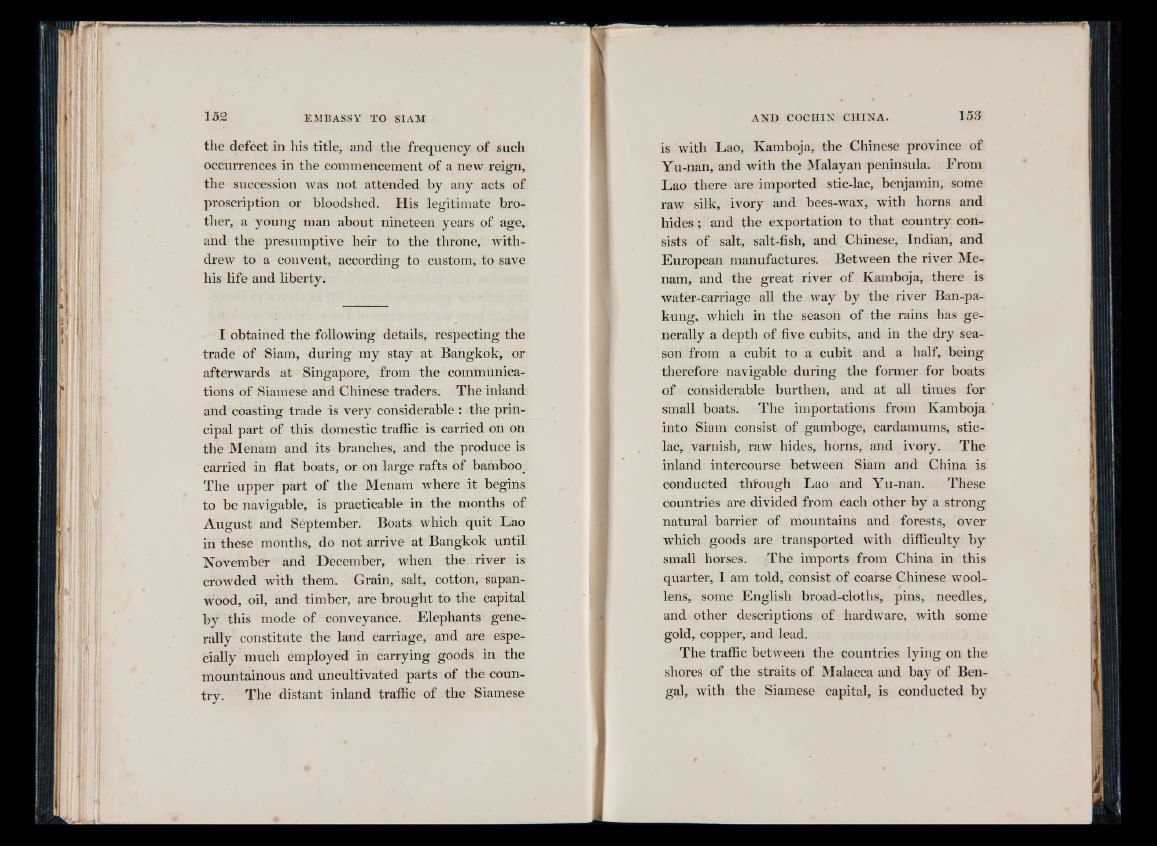
the defect in his title, and the frequency of such
occurrences in the commencement of a new reign,
the succession was not attended by any acts of
proscription or bloodshed. His legitimate brother,
a young man about nineteen years of age,
and the presumptive heir to the throne, withdrew
to a convent, according to custom, to save
his life and liberty.
I obtained the following details, respecting the
trade of Siam, during my stay at Bangkok, or
afterwards at Singapore, from the communications
of Siamese and Chinese traders. The inland
and coasting trade is very considerable : the principal
part of this domestic traffic is carried on on
the Menam and its branches, and the produce is
carried in flat boats, or on large rafts of bamboo
The upper part of the Menam where it begins
to be navigable, is practicable in the months of
August and September. Boats which quit Lao
in these months, do not arrive at Bangkok until
November and December, when the river is
crowded with them. Grain, salt, cotton, sapan-
wood, oil, and timber, are brought to the capital
by this mode of conveyance. Elephants generally
constitute the land carriage, and are especially
much employed in carrying goods in the
mountainous and uncultivated parts of the country.
The distant inland traffic of the Siamese
is with Lao, Kamboja, the Chinese province of
Yu-nan, and with the Malayan peninsula. From
Lao there are imported stic-lac, benjamin, some
raw silk, ivory and bees-wax, with horns and
hides ; and the exportation to that country consists
of salt, salt-fish, and Chinese, Indian, and
European manufactures. Between the river Menam,
and the great river of Kamboja, there is
water-carriage all the way by the river Ban-pa-
kung, which in the season of the rains has generally
a depth of five cubits, and in the dry season
from a cubit to a cubit and a half, being
therefore navigable during the former for boats
of considerable burthen, and at all times for
small boats. The importations from Kamboja
into Siam consist of gamboge, cardamums, stic-
lac, varnish, raw hides, horns, and ivory. The
inland intercourse between Siam and China is
conducted through Lao and Yu-nan. These
countries are divided from each other by a strong
natural barrier of mountains and forests, over
which goods are transported with difficulty by
small horses. The imports from China in this
quarter, I am told, consist of coarse Chinese woollens,
some English broad-cloths, pins, needles,
and other descriptions of hardware, with some
gold, copper, and lead.
The traffic between the countries lying on the
shores of the straits of Malacca and bay of Bengal,
with the Siamese capital, is conducted by